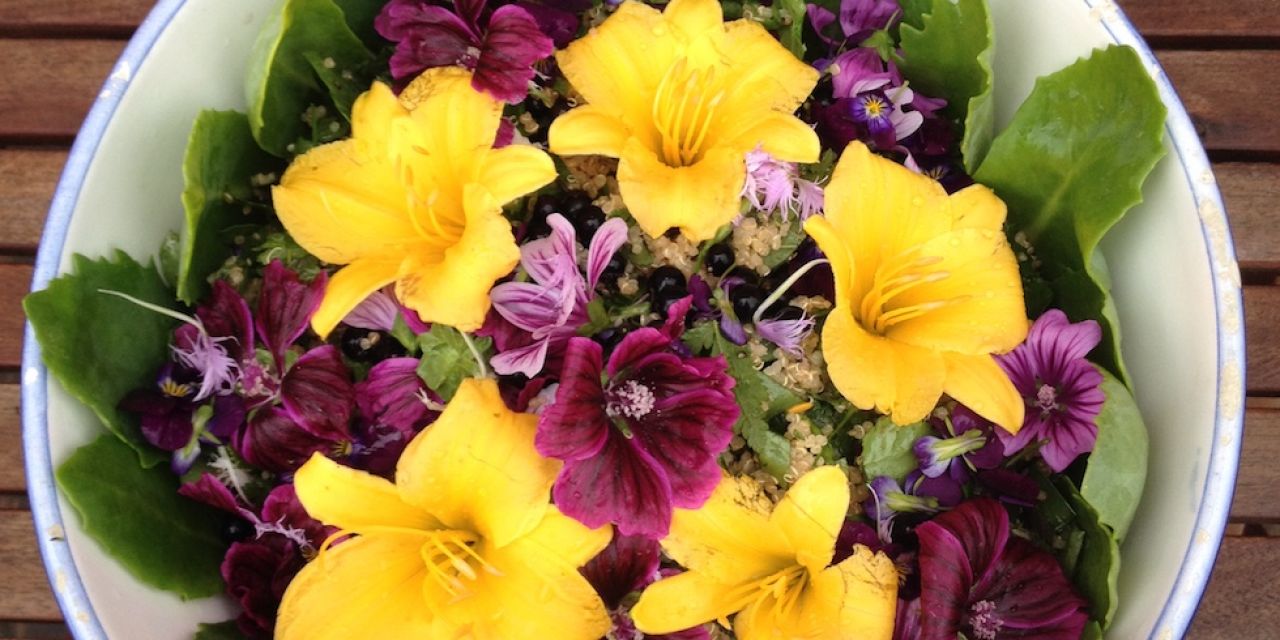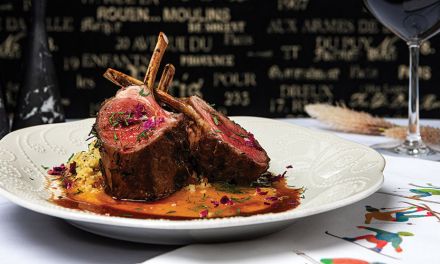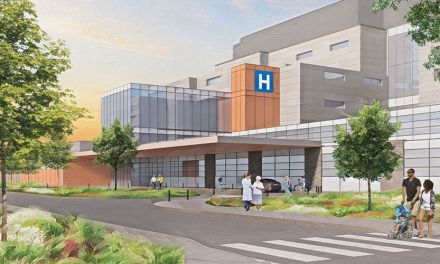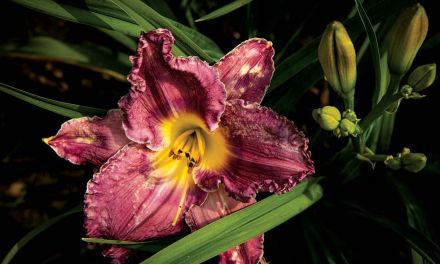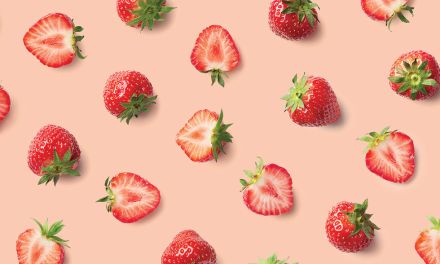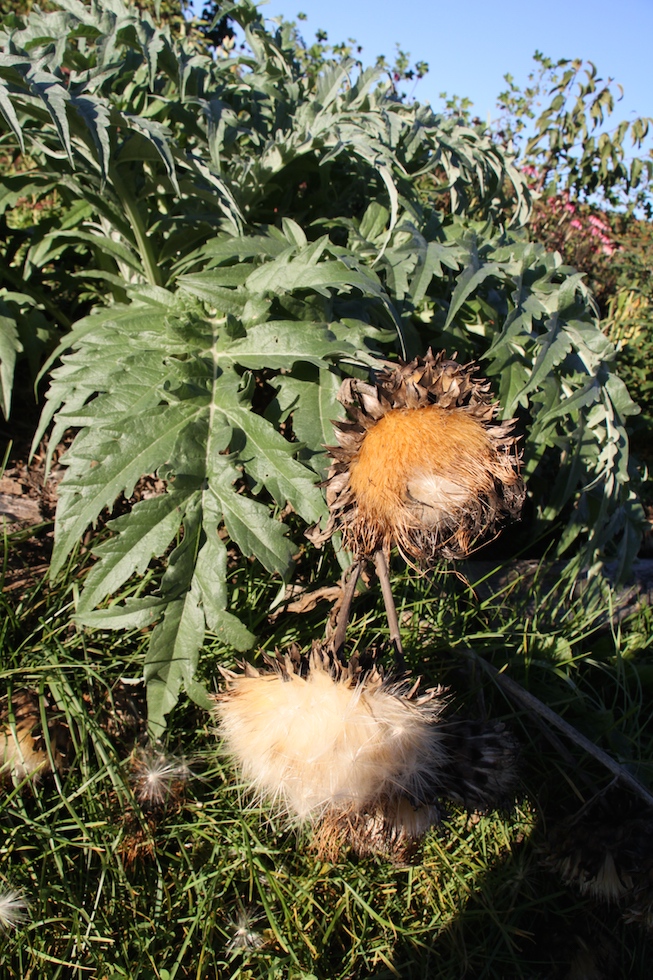
“Once you have one plant, you can get hundreds in a short period of time with a little knowledge, a bit of patience, and a touch of faith in the miracle of life.”
~Ben Caesar
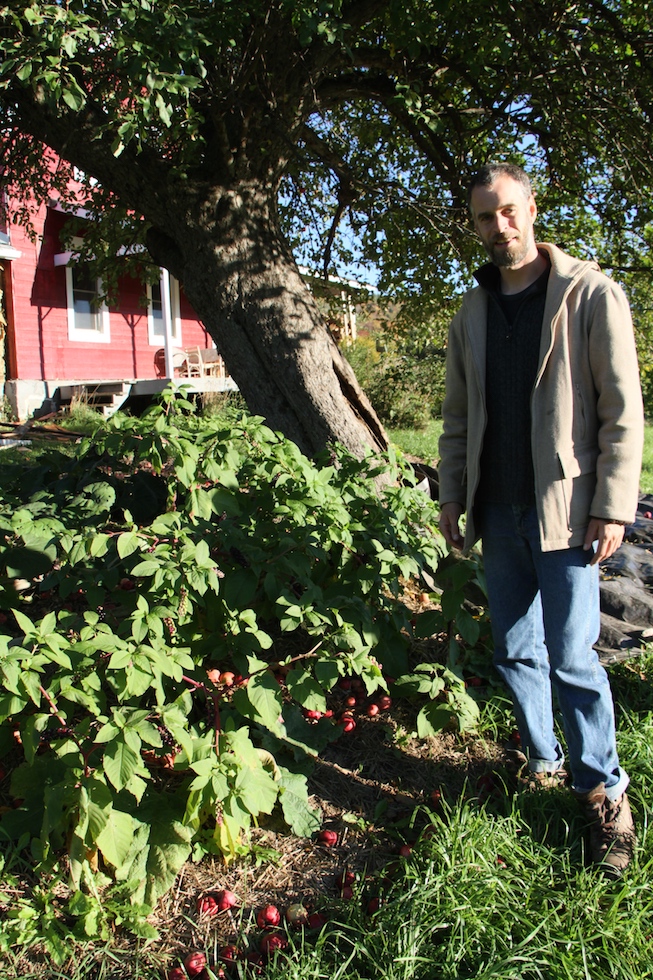
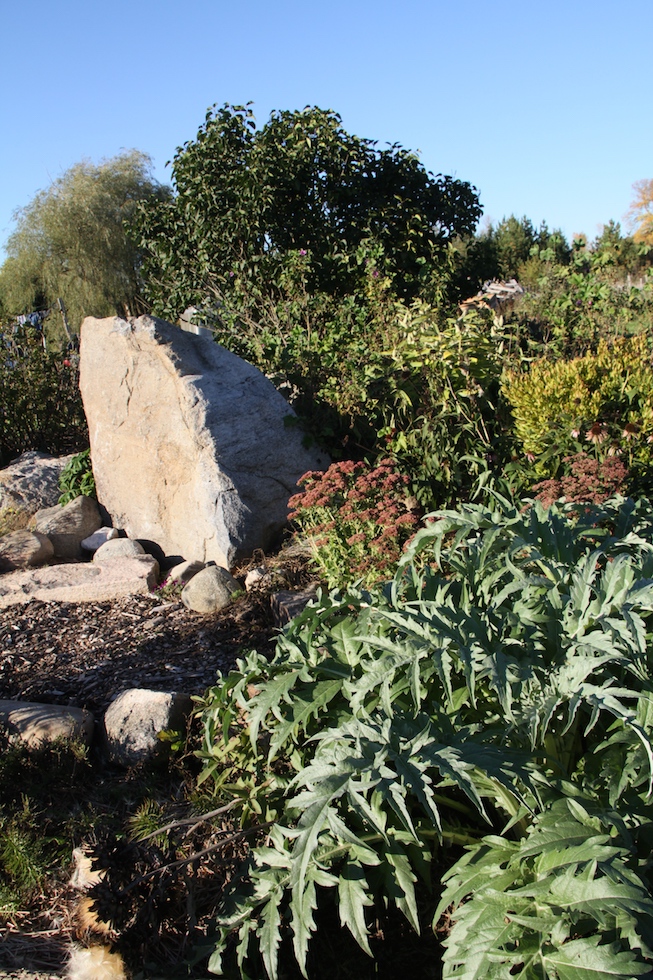
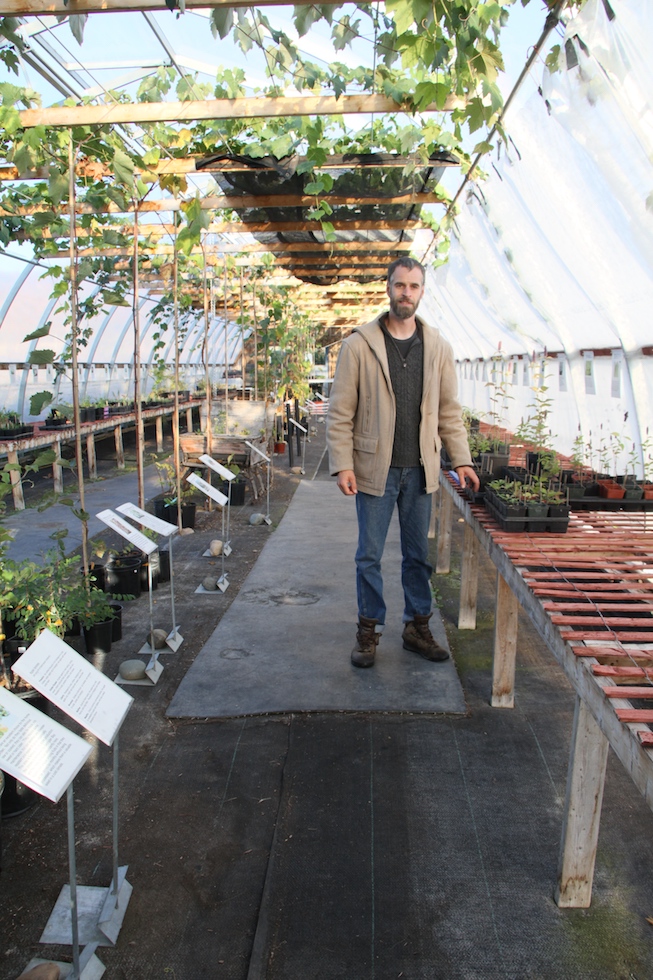
Fiddlehead Nursery Perennial Salad
10 sorrel leaves
15 leaves of sedum ‘Autumn Joy’
10 musk mallow flowers
10 pansy flowers
3 daylily flowers
8 peach-leaved bellflower flowers
10 musk mallow leaves
25 chocolate mint leaves
small handful of sweet cicely leaves
20 anise hyssop leaves
10 scorzonera leaves
dressing…
1/4 cup olive oil
3 tbsp red wine vinegar
salt & pepper to taste |E|
Fiddlehead Nursery, close to Kimberly, is no ordinary garden business. Ben Caesar, Kelly Hopkins and their daughter Harriet live in a traditional, red frame farmhouse, set against the stunning backdrop of the Escarpment, surrounded by the nursery which specializes in edible, perennial plants and low-maintenance, productive gardens.
The magic of Ben’s nursery is that it has been created in harmony with the environment—carved out of the rocky landscape. He was inspired by the British technique of forest gardening, a method of designing edible landscapes that mimic the structure and diversity of natural ecosystems. This method promotes the belief that edible landscapes can be grown anywhere. Teaching himself through experience and building on the knowledge of other experts Ben is proof that it can be done.
Developed for the propagation of rare edible perennials, Ben’s gardens and landscapes are esthetically beautiful, easy to care for and provide organic food. He also does private consultations for garden design and conducts workshops to make this gardening method accessible to all.
Ben is one of a new breed of young growers who are working small farms. In this era of large corporate food operations, there is a movement among young and old alike to return to growing our own food. Gardens are appearing on the rooftops of city buildings, in urban front and back yards and young people are beginning to grow organic market gardens. Farmers markets are gaining in popularity. This trend is a bright light in our world of super stores and chemically grown foods. *
Ben could be considered a pioneer gardener of sorts. Grey/Bruce is a Zone 5 growing area—a category used to identify which plants will thrive successfully in different regions based on weather and soil conditions. *
Fiddlehead Nursery is experimenting to push the growth of some plants further north than previously attempted. And, using permaculture (sustainable, self-sufficient, growing style) Ben uses certain plants like Blue Wild Indigo to replenish and enrich the soil with nitrogen, thereby eliminating the use of chemicals.
Although Ben gives much credit to nature, he is the artist who plants the seeds, blends the colours and creates a masterpiece from what was once a patch of dirt. Plants from all parts of the world thrive here—some greens can be traced back to the time of Pompeii. Also being propagated are native plants that were foraged by our early First Nation’s communities.
Saskatoon berries for example, are often overlooked as a source of food. Abundantly growing wild in Ontario, the early native population helped settlers to survive by teaching them to use these berries in the making of pemmican. Ben harvests ethically, with the same respect for the land that our First Nations have always used—taking only what’s required—allowing plants to continue to develop.
Fiddlehead’s large greenhouse contains neat rows of propagating plants, each labeled and described. Fruit trees and grapes wind up beams and along the roof. Hours of intensive labour must be spent dividing, planting and caring for each seedling. Ben starts propagating in December and indoor grow lights ensure that seedlings are ready when the nursery opens in mid-May.
Summer helpers come in through the international Woofer program that places volunteer gardeners internationally on organic farms in return for room and meals. Leonardo Duarte, originally from Colombia, has volunteered for three seasons at Fiddlehead Nursery. He has taken his permaculture knowledge to Toronto where he lives with his family and has built several community gardens there.
Keen to share his knowledge, Ben offers workshops once a month during growing months. ‘Designing an Edible Landscape’ teaches participants how to incorporate a wide variety of fruit and nut trees, berry bushes, perennial vegetables, salad greens and edible flowers into a beautiful, low maintenance, organic garden. ‘Plant Propagation for the Hungry Gardener’ is a workshop that teaches participants how to start edible perennials from seeds and plant and root division. Also popular are garden tasting tours that give visitors ideas of which plants they might like to purchase and include in their own landscapes. |E|

“We endorse a gardening system known as forest gardening, wherein an edible landscape is designed to act like a natural ecosystem so as to reduce maintenance and work. The most common yield is food, but forest gardens can also provide products such as medicine, fibre, firewood, dye, building materials, and more.
Forest gardens incorporate trees, shrubs, groundcovers, vines, perennial vegetables and salad greens, all interplanted so as to minimize competition and maximize co-operation.
They can be created on any scale, from a small backyard to a few acres.”
~Ben Caesar

